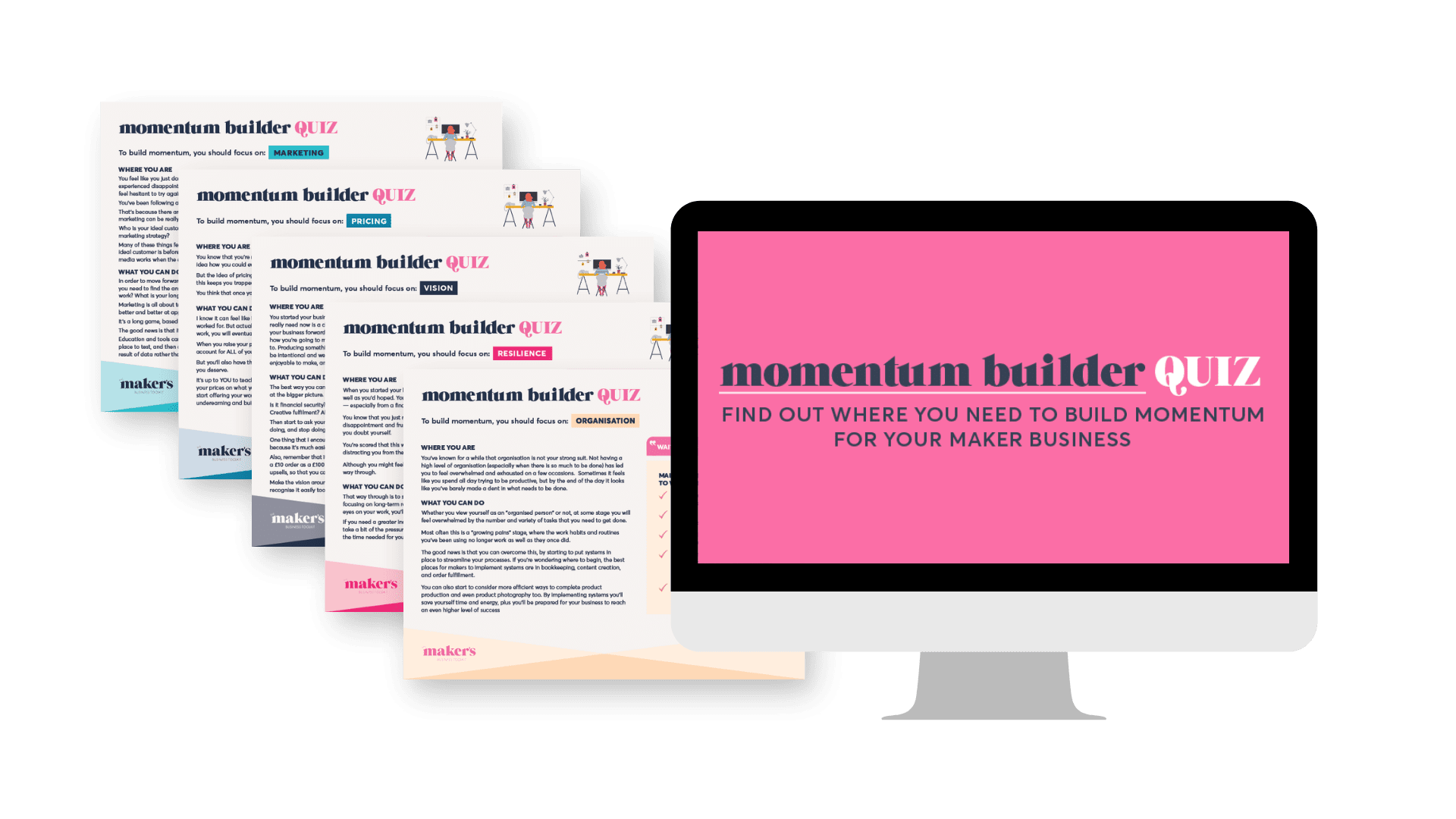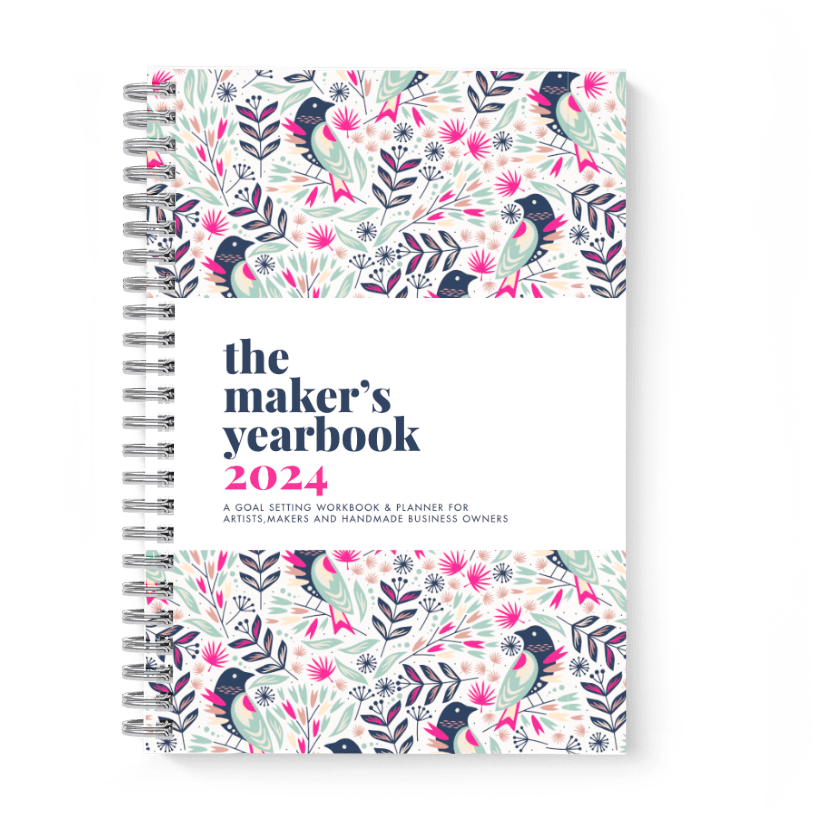Let’s look at some of the signs of a potential scam so that you can protect your time and your money from this type of fraud.
The most important thing to remember is that the vast majority of scammers are not interested in getting your art. They are interested in getting your money.
Although there are people out there who will order products, claim they didn’t receive them, and demand a refund so that they end up with both product and a refund, this is much less common than many of us fear.
The serious scammers aren’t interested in your products. They are only interested in money.
So any inbound enquiry you receive which requires you to send money to another party, whether for an application fee, or an “overpayment,” or a fee for service, should set off the warning bells.
Let’s look at three examples of art scams:
1. The overpayment
This is by far the most common art scam I have personally encountered and most artists and makers who have their contact details listed anywhere online will probably have received one or more emails that looks quite similar to this one.
Greetings!
My name is John XXXX from XX. I actually observed my wife has been viewing your website on my laptop and i guess she likes your piece of work, I’m also impressed and amazed to have seen your various works too, : )You are doing a great job.
I would like to receive further information about your piece of work and what inspires you. I am very much interested in the purchase of the piece (in subject field above) to surprise my wife.
Kindly confirm the availability for immediate sales.
Thanks and best regards,John.
Note that there are no identifying features of your particular work or business in this email. You may see a slightly different version which mentions a piece of work by name.
In each case you can easily see that this is a generic email sent to a large number of people and that the person writing it has no real familiarity with your work.
This is not how genuine customers behave.
When you reply to the email to let the scammer know that the piece is available for sale, you will receive a reply that looks something like this.
Thanks for the message, I must tell you I intend to give my wife a surprise with the immediate purchase of the piece. Also If you’d like to know, I’m relocating to the Philippines soon and our wedding anniversary is fast approaching. So I’m trying to gather some good stuff to make this event a surprise one. I am buying the art work as a gifts to her. I’m okay with the price, I think it’s worth it anyway, so I’ll be sending a check.
As regarding shipping, you don’t have to worry about that in order not to leave any clue to my wife for the surprise. as soon as you receive and cash the check, my shipping agent (who is also moving my personal effect) will contact you to arrange pick-up.
I would have come to purchase the piece myself but, at the moment, am on training voyage to the North Atlantic Ocean (I’m an ocean engineer) with new hires who are fresh from graduate school and won’t be back for another couple of weeks.
Regards,
John
Some warning signs in this message are an overly complicated backstory, a reason why the purchaser has no delivery address, time pressure and an insistence on paying by cheque.
The scammer is trying to control these aspects of the transaction because they are important to the scam.
But the real red flag here is that the purchaser wants to arrange their own shipping.
Why would this be suspicious?
Well, the scammer has already set this up when he mentions that he is out of the country.
What you later discover is that the purchaser wants you to help him out by allowing him to include the shipping costs in the cheque he sends to you. You would then pay this amount to the courier by sending a money transfer to them.
This “overpayment” will often be a very large amount, explained by the fact that the purchaser is shipping the artwork internationally.
Alarm bells should be ringing very loudly now.
The scam is to get you to pay your cash to a courier company that most likely does not exist. This is what John really wants. The enquiry about your art is just a smokescreen.
Often the cheque you received will be fraudulent in some way, the art may never be collected by this courier, and you may end up out of pocket for the amount of the shipping.
So, how can you avoid becoming a victim of this kind of scam without becoming suspicious of all your customers?
Keep an eye out for the following warning signs in emails:
- Poor English, grammar or punctuation
- International Enquiry (sometimes, though not always)
- Insistence on paying by cheque.
And never accept overpayments (for any reason) or allow the customer to arrange their own courier.
2. The art book or art competition
Another common “scam” is an email from an organisation that promises to publish your work in a book.
This one, while not fraudulent, is a means of misleading and flattering artists into paying out large sums of money to be included in a coffee table book or entered into a supposedly prestigious art competition.
When you pay to be included in a book you are buying advertising space.
That means you need to do your homework on any publication selling advertising space to you, and proceed with a healthy dose of skepticism.
Ask the publishers for the names of galleries who receive the book and then contact some of those galleries to ask about it.
Contact some they don’t mention too, just to check.
If you have a relationship with any local galleries, ask them how important publications like this are to them in selecting new artists. Ask if they even read them.
Don’t rely on Amazon reviews or blog posts as many of these organisations encourage people to write favourable online reviews that may not reflect the real world reputation of the publication.
As with all advertising, you should never rely on the word of the person selling the advertising space and, if in doubt, it’s probably best to take a conservative approach.
3. Identity theft
Artists are actually also fairly vulnerable to attempts at identity theft.
Encouragements to enter online art competitions and apply for online art galleries can be a front for an identity theft scam.
A detailed application form can often ask for lots of the kind of information that could be used to steal your identity.
Often this is genuine, but sometimes it is not.
The key here is to again do your research on the company asking for the information and not get involved with competitions or online offerings you’ve never heard of or for which you can’t find much information.
While completing the application form, if anything feels off or if unusual information is being requested then ask yourself if it’s really worth the risk.
And finally……not a scam but probably not the best use of your money.
4. Vanity galleries
Again, this is not a fraudulent transaction but it could probably be argued that it is a dishonest one.
There are a group of galleries that contact artists, offering them places in group or solo shows, for which they need to pay the gallery. The fees are often substantial and may include paying for promotion and a private view.
Often, these fees are only mentioned later in the process, when you have had the emotional high of telling your friends and family that you’ve been offered an exhibition in a London or New York Gallery
If you are offered an arrangement like this, again, do your homework and ask lots of questions.
Make sure you know exactly what you’re getting for your money. When they say they promote the exhibition, what exactly do they do? Do they email a customer list? Do they send out flyers or press releases?
If possible, go along to another artist’s private view show and get a sense of the people there. Are they mostly friends and family of the artist? Are there any purchases happening?
Again, don’t take the gallery’s word for it. Go into local coffee shops and businesses and ask if they know the gallery. Gather as much information as you can and make sure you read every single word of any contract you receive.
As online business owners, artists are targets for both outright scams and high pressure offers that aren’t a good use of your money.
Make sure you protect yourself by thinking carefully about each opportunity presented to you.
While not every unsolicited email is from a scammer, a good general rule of thumb is to be wary of vagueness and flattery when you see them, and to think carefully before handing over any payments or personal details.








